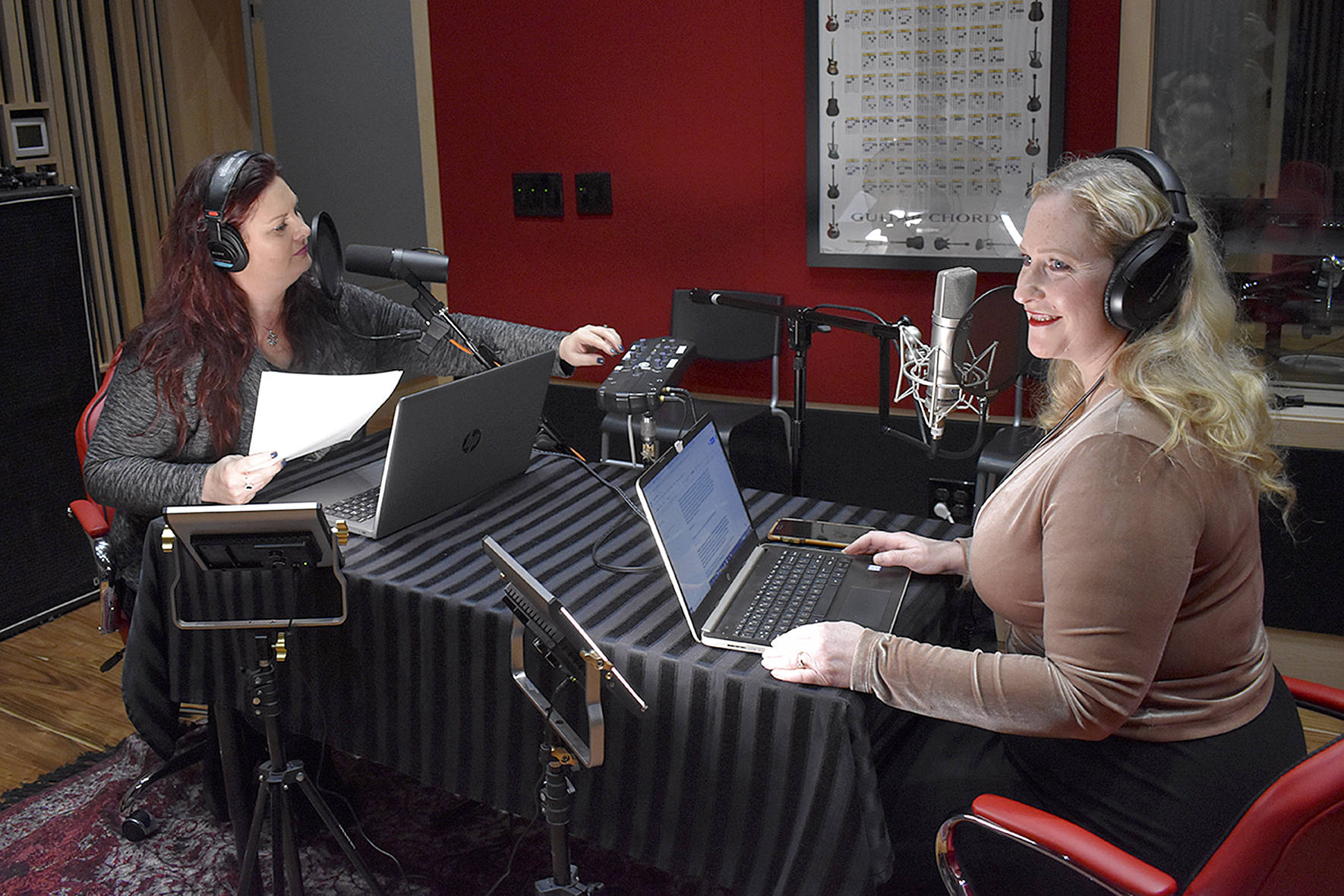Opening ThisWeek
PActress
Runs Fri., Dec. 5–Thurs., Dec. 11 at Grand Illusion. not rated. 86 minutes.
It doesn’t really matter if you remember Brandy Burre from The Wire or not; nor is it worth looking up her scant credits on IMDb. This recursive documentary about her increasingly discontented life as a mother and housewife in the Hudson River Valley, meanwhile trying to resume her old trade, provides a definitive role. Director Robert Greene previously followed North Carolina semi-pro wrestlers and Alabama teens (in Fake It So Real and Kati With an I, respectively, both seen here in 2012). Those young subjects were relatively unsophisticated and unformed, learning how to present themselves to the world.
Burre, vaguely in her 30s, is an entirely different sort of heroine. She’s Greene’s neighbor in the resurgent commuter suburb of Beacon, New York; and she agreed—surely with some sort of publicity agenda in mind—to let him trail her through what proves an eventful period in her life. Scripted, it could be melodrama. Sensationalized, it could be one of those Real Housewives TV shows. (Then there’s Lisa Kudrow’s considerably more self-lacerating The Comeback on HBO.) Yet Greene cooly withholds judgment on Burre, quite aware she could be playing him. That’s her job, after all, as stated in the title.
With two small children and a mostly silent boyfriend, Tim, who runs hipster restaurants, Burre now faces a familiar female dilemma. She’s got the house and family (if not the marriage); Tim seems like a decent, dependable breadwinner; yet her youthful identity is being smothered by domestic life. The next two decades are set for her in sleepy, snowy Beacon—unless she can somehow revive her career. With Tim and the kids away for the holidays, she says, “I forgot what it’s like to be free of responsibilities.” She slips down to New York for well-lubricated reunions with old theater pals, talks to an agent, and starts a makeover for new headshots and auditions. Soon she’s calling the Beacon household “playing the roles . . . playing house,” like it’s her next gig after The Wire.
Putting on makeup with practiced self-regard in the mirror, performing a confident cabaret set onstage, crying on cue for Greene’s lens, Burre remains unknowable—to Greene, to us, and to the increasingly baffled, stoic Tim. She’s no tragic figure like Madame Bovary or Anna Karenina, yet her declarations to the camera often feel cribbed from the canon. Meanwhile Greene keeps feeding her more rope, even encouraging her to perform some melodramatic vignettes: artifice punctuating what increasingly seems artificial. You could call Burre extremely selfish or extremely skilled, yet it’s impossible to dismiss her complaints. Actress raises but refuses to answer some unsettling questions. How strong is your marriage? And: How well do you know your spouse? Brian Miller
PThe Babadook
Runs Fri., Dec. 5–Thurs., Dec. 11 at SIFF Film Center. Not rated. 93 minutes.
How did this children’s book get into the house? Nobody seems to know. But no matter—it’s here now, and there’s no escaping it. Books are like that; you open them, and they become part of your life, for better or worse. This one—it shares its title with the movie we are watching—is called The Babadook, almost an anagram for “bad book,” and that’s the effect it has on Amelia (Essie Davis) and her 6-year-old son Sam (Noah Wiseman). They’re especially vulnerable to its dark magic. Among other issues, the death of Sam’s father some years earlier is very much in the background of the scary little tale that unfolds.
Amelia reads the book with her troubled and overimaginative boy, ignoring the timeworn horror-movie warning about chanting the name of the monster. The Babadook is dark-suited and creepy-fingered, and he wears a cape and a Victorian hat, like a creature from an earlier era of horror—suggesting that what’s scary never really goes out of style. After a great deal of slow-burning buildup, the Babadook becomes real, and mother and son must wage battle (but then they have been all along).
This is the debut feature of writer/director Jennifer Kent, who skillfully keeps us locked into the moment-by-moment thrills of a monster movie, but also insists that this Babadook is clearly a stand-in for the other problems that inflict the lonely household: grief, guilt, depression, an unwillingness to live life. And because Kent is Australian, there has to be an undercurrent of curious humor to this disquieting storyline—the world is already comically askew long before the Babadook makes his entrance.
The two leads are excellent, and the throwback pleasures of watching an old-fashioned approach to horror are very real. If this movie isn’t quite the masterpiece some have suggested, it still hits a lot of fascinating moments while generating an impressive number of chills up the spine. And it smartly gets to the root of so many great horror stories, which brings us back to the question of how the book got into the house: because, the movie suggests, mother and son wished it there. The Babadook may be a monster, but he’s the monster they needed. Robert Horton
PNational Gallery
Runs Fri., Dec. 5–Thurs., Dec. 11 at Northwest Film Forum. Not rated. 173 minutes.
Much as I hate the tedious methodology of a Frederick Wiseman documentary (no narration, no graphics, no interviews, just endless fly-on-the-wall footage), it’s hard to argue with the results. On one level, this is a three-hour movie about people looking at and discussing the paintings in London’s National Gallery; and some bits are less than scintillating. On another, it’s a forced engagement with a living, breathing, budget-worrying institution that’s trying desperately to attract time-crunched visitors—people who dread a long, dreary trip the museum, just as I dread each long new Wiseman doc.
The challenge for the National Gallery’s staff—never named, of course—is Wiseman’s challenge writ large: Take something we think we all know, seemingly old and dull, and force the spectator to see it anew. In every frame of National Gallery you sense his craftsman’s respect for the curators, scholars, conservators, docents, installation guys, and even the floor sweepers. This is not glamorous work. This is, in a deeper sense, obeisance to antiquity. (The museum collection spans the 13th through 19th centuries.) In our age of Instagram, such devotion seems deeply outdated and unfashionable. Wiseman can surely relate.
Unlike most of Wiseman’s 40-plus past docs (Titicut Follies, At Berkeley, etc.), National Gallery has the benefit of some paid professional talkers: staff members who give erudite, funny, engaging public tours. These are people whose mission it is to connect Leonardo and Titian and Rembrandt with modern museumgoers. Appraising Michelangelo’s famously unfinished The Entombment, a curator quips of Mary Magdalene, who seems to be studying her blank palm, “It looks like she’s checking her e-mail, doesn’t it?” Hanging a restored Renaissance triptych, a curator directs the spotlighting being minutely adjusted by a guy on a scaffold high overhead. Up, down, left, right, more, less, yes, good, no . . . craning his head high up and low, blinking between the painting and harsh lighting, he tells a colleague, “This is why I usually bring my sunglasses.”
As ever with Wiseman, there’s no context. Are visits up or down? The cocktail reception for a Turner show seems to bode well (and primes us for Mike Leigh’s acclaimed biopic Mr. Turner, due January 23). But, as with the budget meetings and school tours we see, it’s unclear if the National Gallery is thriving or treading water. In earlier works like Hospital, Public Housing, and Welfare, Wiseman was more of a muckraker: His interest seemed to be institutions in crisis that were failing the citizenry. If the guy came to your door, it meant trouble. However, recent films like La danse and Crazy Horse have felt more like tributes. Wiseman is now such an eminence—an institution in his own right—that you’d be crazy to turn him away.
In one scene here, a guy I presume to be the National Gallery’s director suffers a marketing woman’s suggestions with pained politeness—his mind is in a different century, no doubt. Yet letting Wiseman in the building proves to be a genius PR move. Watch the movie and you’ll want to visit. And though it’s reasonable for Seattle viewers to ask whether their three hours might be more fruitfully spent at one of our local museums, I’d argue that National Gallery will enhance your next visit. Only the paintings are fixed in time. Not so the institutions. Brian Miller
Point and Shoot
Opens Fri., Dec. 5 at Varsity. Rated R. 85 minutes.
Maybe each generation gets the Lawrence of Arabia it deserves. T.E. Lawrence was a childhood hero to Matthew VanDyke, the subject of the documentary Point and Shoot. Growing up in a sheltered existence in Baltimore, VanDyke was a big fan of the British adventurer—or at least he liked the idea of Peter O’Toole riding on the back of a camel. Steeped in that image, and mixed up with video games and reruns of an outdoorsy TV series featuring a rugged Aussie swashbuckler named Alby Mangels (Google him to discover a pre-Crocodile Dundee crazy man), VanDyke decided he would find adventure himself. Socially awkward and afflicted with OCD, VanDyke nevertheless set off for Arabia with a motorcycle and a camera.
His footage ended up with Oscar-nominated documentarian Marshall Curry (Street Fight), who added interviews with VanDyke and his very patient girlfriend to fill out the story. The result is intriguing: Although VanDyke initially comes across as a poster boy for a privileged Westerner inserting himself into cultures he’s utterly clueless about, his months-long journey from Morocco to Iraq does give us glimpses into what the region looks like at ground level. Eventually he cruises into Libya, where he makes friends—the best he’s ever had—with a group of anti-Gaddafi rebels. Which is how he ends up in jail for a few months, later serving alongside the rebels—in actual street-by-street fighting—when the tide began to turn against the longtime Libyan dictator. VanDyke even powers through his obsessive-compulsive fears, nervously sharing a communal bowl of Libyan stew with his comrades. He looks queasy, but he does it.
Through all the strangeness, we are constantly reminded that VanDyke is doing this for the camera—laboriously setting up shots of himself riding his chopper heroically into the frame or handing off the camera so a fellow soldier can film him firing his rifle at a Gaddafi sniper. VanDyke has no grand philosophy about any of this, or any apparent view on Middle East events; he’s just trying to get the shot and further his “crash course in manhood,” as he describes his quest. (If you’re flashing back to the ill-fated Timothy Treadwell in Grizzly Man, you’re not far off the mark.) For all that, because of Curry’s curating eye, Point and Shoot is an actual character study. Lawrence of Arabia, who had the erudition VanDyke lacks, knew how to ham it up for the camera, too. Maybe 21st-century vanity just looks less grand because of cheap video and the hero’s suburban drawl. And maybe it’s a good idea to be skeptical about guys like that these days. Robert Horton
The Sleepwalker
Opens Fri., Dec. 5 at Sundance Cinemas. not rated. 92 minutes.
The infrastructure of The Sleepwalker is as carefully arranged as the brick modernist estate where all the action takes place. Above that framework, unfortunately, is a vague exercise in arty mystery and perplexing behavior. We are in the woods of Massachusetts, where this stunning getaway is home to Kaia (Gitte Witt), currently remodeling her late father’s house with the help of boyfriend Andrew (Christopher Abbott, from Girls). The extremely abrupt arrival of Kaia’s sister Christine (Stephanie Ellis, who looks like a hippie Modigliani portrait) makes for an unwanted houseguest; then Christine’s fiance Ira (Brady Corbet) shows up in search of his errant, and pregnant, companion. Long-simmering tensions and old family secrets will now be served in the main room, along with too much alcohol. And, oh yes, Christine sleepwalks.
Oddly, Christine’s nocturnal ramblings are mostly taken in stride by the other three, but then nobody seems overly concerned about her conspicuous mental unbalance. When Andrew—at first glance a salt-of-the-earth type, although he’s got a secret past, too—raises the question of how soon they can get this weirdo out of the house, he sounds a rare note of recognizable human behavior. Maybe such behavior wasn’t the goal of director Mona Fastvold (co-writer of the script, with indie stalwart Corbet), who seems more interested in the more experimental aspects of storytelling, or at least in creating an ambiguous world that Roman Polanski or David Lynch might have conjured up during a mild daydreaming session.
Taken as that, The Sleepwalker does create a disquieting mood: gauzy, rife with fairy-tale disfigurement, and laced together with a disorienting score (music mixed with ominous sound) by Sondre Lerche and Kato Adlund. Fastvold, a Norwegian music-video director making her feature debut, brings this setting a northerly chill. The bluntness of the sex scenes has a European directness, and the two men get an interesting current of competitive hostility going, basically because they’re male. These impressive elements somehow don’t create a world that completely hangs together, and the problem has something to do with the people onscreen: They remain four characters in search of something beyond caricature, “types” who seem to carry symbolic weight for the filmmaker but don’t really breathe on their own. The house, though, is worth a look. Robert Horton
E
film@seattleweekly.com






